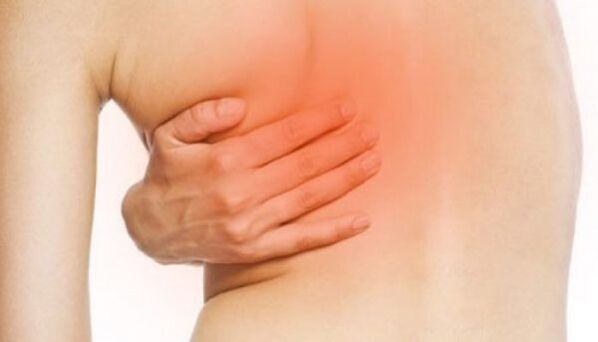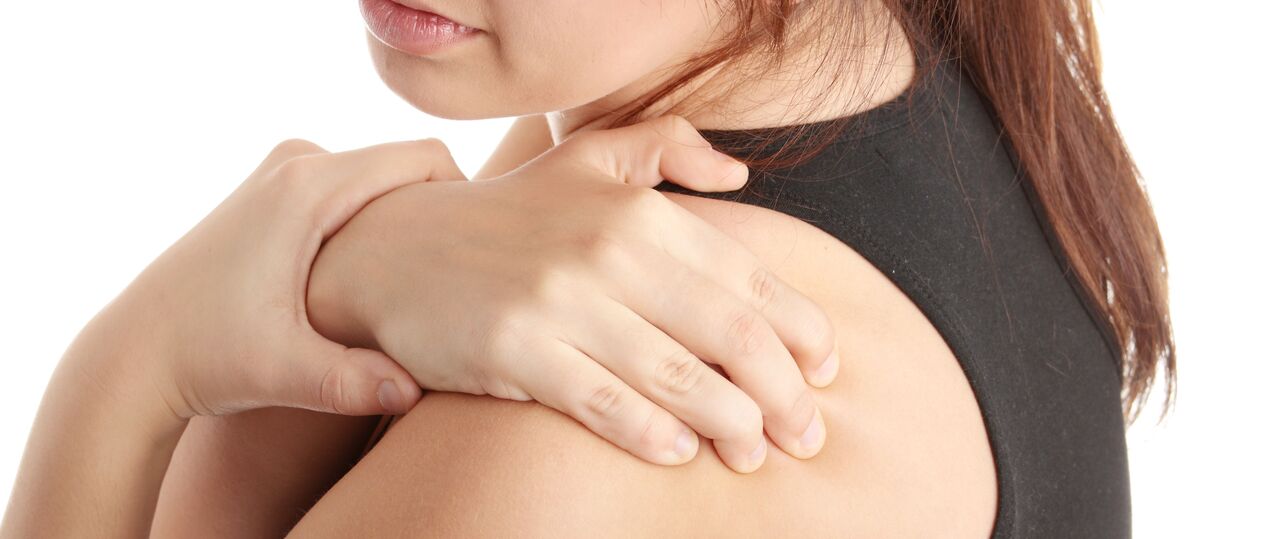Painful sensations under the scapula - this symptom can be experienced by adults suffering from diseases of the musculoskeletal system or pathology of internal organs, and children who simply do not count physical activity or stand in the draft.
Self-administration of analgesics when subscapularis pain occurs is completely unacceptable: such pain sensations can be a sign of life-threatening conditions.
At the same time, attention and often emergency medical care deserve not only sharp pains, but also a dull pain under the left shoulder blade.
The nature of the pain and the accompanying symptoms help to suggest a specific disease. However, only a qualified physician can understand which organ is causing the pain based on the patient's complaints, schedule the necessary diagnostic tests, and provide emergency care if necessary.
Causes of pain under the left shoulder blade in the back

The proximity of the lungs, heart, and spine, as well as the extensive network of nerve fibers, expand the list of possible causes of subscapularis pain. In this case, each disease is characterized by other specific symptoms, and the nature and duration of pain sensations also change.
Pathology of the musculoskeletal system and nerves
Diseases of the muscles of the spine and back are a common cause of left subscapularis pain. In such diseases, the pain is often unilateral.
- Osteochondrosis - the formation of osteophytes in the thoracic or cervical spine, starting from the neck and upper back, ending with radiation to the arm, causing pain in the left or right side. The pain does not go away at rest, it often lasts, but is tolerated.
- Intercostal neuralgia is a severe pain that spreads to the intercostal space and is aggravated by breathing, dizziness, sneezing / coughing. Often with neuralgia, the sensitivity of the skin to the source of pain also changes. Congestive pain under the left shoulder blade often occurs with myocardial infarction, angina pectoris, neuralgia, causing paresthesia in the form of gas shoots.
- Scapular-rib syndrome is a "reward" for activities associated with strenuous physical work or prolonged stay in one position (office workers). People complain of mild dull pain that is localized between the neck and shoulder and spreads under the backbone.
It is important! The causes of pain in the lower back under the left shoulder blade, radiating to the arm and having a compressive nature - osteochondrosis and angina pectoris - have a different feature. Pain with angina pectoris lasts up to 30 minutes, with osteochondrosis - several days. In addition, the onset of angina pectoris is stopped with nitroglycerin or other heart medications.
Sometimes subcapsular pain is triggered by myositis (simultaneous stiffness of movement and tension of certain muscle groups), spinal cord injuries (acute pain, always falling, shock, etc. ) or oncology (pain can occur). periodically, not intensively). Tuberculosis of the bones, ie the defeat of the scapula, cannot be ruled out.
Diseases of the heart and blood vessels
Cardiac pathology is one of the most dangerous and can be diagnosed when a patient complains of subcapularis pain. In this condition, the pain in heart disease does not always begin on the anterior surface of the chest (behind or to the left). Under the left shoulder blade, the cause of pain in the heart area may be:
- Angina pectoris - pain pressing on the back of the sternum, under the left back and clavicle, extending to the jaw and arm. The intensity of pain decreases at rest, but changes in body position do not bring relief. The situation is reversed with increasing pain with scapular-costal (vertebrogenic) syndrome. An attack of angina pectoris is corrected by taking nitroglycerin, and manual therapy for back pain is excellent.
- Myocardial infarction is a sharp, increasing pain in the heart with a characteristic radiation to the left (including under the scapula) that is not stopped by cardiac glycosides. The patient has severe fear, which is not associated with damage to the spine and nerve fibers. Immediate hospitalization is required!
- Hypertensive crisis - is often accompanied by pressing heart pain that spreads to the left shoulder blade. The cause of the pain is easily determined by measuring a / d.
- Pericarditis - with this disease, the pain is reduced at rest and when the trunk is bent forward. The pain occurs in the anterior part of the heart, spreads below the back, but is not as intense as acute myocardial ischemia (angina pectoris, heart attack).
- Detachment, aortic aneurysm, is a dangerous condition characterized by throbbing pain under the spine. The rapid increase in pain requires an urgent call to the medical team.
It is important! Both ischemic heart disease (angina pectoris, myocardial infarction) and cervical osteochondrosis are characterized by a tongue tingling on the left side.
It is important! Often a symptomatic picture similar to cardiac pathology is given by vegetative-vascular dystonia. At the same time, the manifestation of his severe condition is clearly fabricated (psychogenic factor), the patient often becomes irritable, trembles, feels a fever and a lump in the throat.
Respiratory diseases
Pain under the left back can cause the following lung diseases:
- Pneumonia - causes pain only when the site of inflammation is located near the pleural membrane. Painful sensations of low intensity occur from time to time, have a point localization and intensify with breathing.
- Pleurisy - Unlike pneumonia, the pain is sharp, stabbing. Its intensity depends on the depth of breathing.
Symptoms of lung pain accompanied by pain during inhalation under the left shoulder blade are shallow, rapid breathing, shortness of breath, fever. Hyperthermia can also occur with pericarditis. Severe neuralgia, a slight increase in temperature with myositis is very rare.
It is important! Unlike heart disease, pain with pathology of the respiratory tract is accompanied by night sweats and cough (in the early stages of pneumonia and with pleurisy - dry).
Pathology of the gastrointestinal tract
Pain under the scapula is often accompanied by gastrointestinal diseases. In this case, the symptomatic picture is as follows:
- Peptic ulcer - severe cutting pain is always associated with food intake (occurs before or immediately after a meal), with a non-specific localization of the ulcerative process (the back wall of the stomach or part of its heart) radiating to the scapula. Pain decreases after taking acid-lowering drugs. Perforation of the ulcer is accompanied by increasing pain (like cutting with a knife), the patient presses his feet to his stomach and covers them with his hands.
- Pancreatitis - is accompanied by severe pain in the girdle (including under the left shoulder blade). The attack is always associated with eating errors (fatty, salty, fried foods, alcohol, hunger). Vomiting does not bring relief.
It is important! Pathology of the gastrointestinal tract, which causes pain under the scapula on the left side, is accompanied by other characteristic symptoms - bloating, indigestion, vomiting, belching.
Diagnosis of subscapularis pain
When collecting anamnesis, the doctor pays attention to the relationship of pain with physical activity, food intake, stress, as well as identifies the accompanying chronic and recent diseases.
Assessing the nature of pain, the presence of certain symptoms specific to diseases of various organs allows you to narrow the range of causes to specific systems of the body - heart, lungs, musculoskeletal system, gastrointestinal tract. The initial diagnosis is confirmed by the following studies:
- heart - a / d, ECG, echocardiography and Doppler scan;
- lungs - chest X-ray;
- spine - radiography of the cervical and thoracic regions, CT or MRI.
More detailed examination of the affected organ may be required in the future. Only then is the treatment of the identified disease prescribed.
When and which doctor should I see?

Depending on the intensity and nature of the pain under the scapula, the accompanying symptoms should consult a doctor:
- emergency call for ambulance - acute pain with increasing intensity and rapid deterioration of the general condition;
- traumatologist - get an injury that causes pain syndrome;
- cardiologist - accompanying chest pain (permanent or periodic), shortness of breath, cyanosis;
- neurologist, orthopedist - pain under the left shoulder blade, aggravated by raising the arm, there is a clear link between the onset of pain and physical activity, previously diagnosed with degenerative pathology of the spine;
- gastroenterologist - there is a link between pain and food intake, there are other symptoms of gastrointestinal diseases (nausea, vomiting, etc. );
- pulmonologist - pain under the scapula is accompanied by cough, shortness of breath;
- Therapist - pain occurs permanently or temporarily without a clear cause.
He is often a therapist who diagnoses an insignificant VSD and confirms an acute surgical pathology or oncological process. In the future, the doctor will consult with a specialist with a narrow profile.
Initial treatment regimens
Depending on the diagnosis, the attending physician chooses an effective treatment for the cause disease. An important point in complex therapy is the elimination of pain syndrome:
- Strong painkillers are most commonly used for neurological pain;
- Pathology of the spine and muscles requires a course of non-steroidal anti-inflammatory drugs;
- Heart disease - pain syndrome requires taking nitroglycerin (does not help with a heart attack), Validol only has a reflex effect and does not improve the condition of the heart muscle in ischemic disease in any way;
- If you suspect gastrointestinal diseases, it is recommended to take antispasmodics, acid-lowering drugs (with ulcers).
By simply eliminating the underlying disease, the patient is relieved of pain under the scapula. Acute conditions sometimes require emergency hospitalization and intensive care.
The radicality of treatment depends on the nature of the disease and the duration of its course, so it is necessary to consult a doctor at the first painful symptoms. Not only does the outcome of the disease depend on it, but the chances of a full recovery also increase.
In severe cases, timely medical care saves the patient's life.























